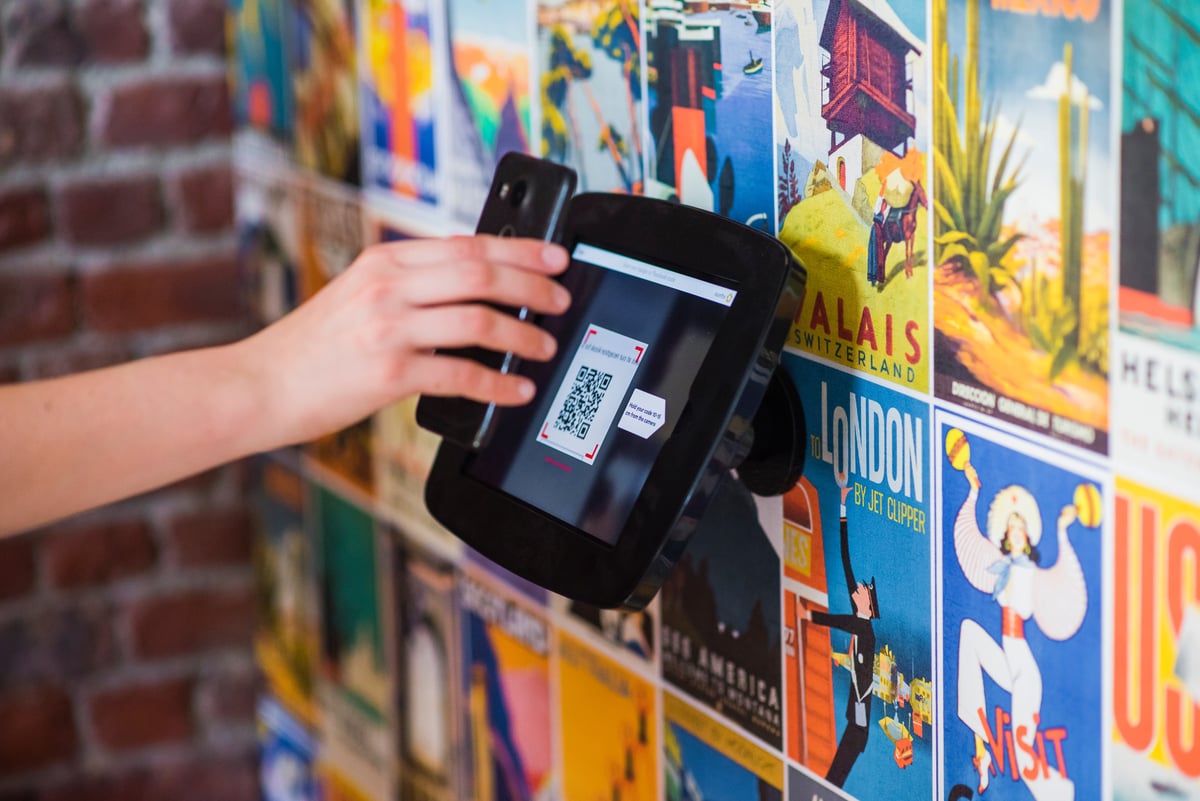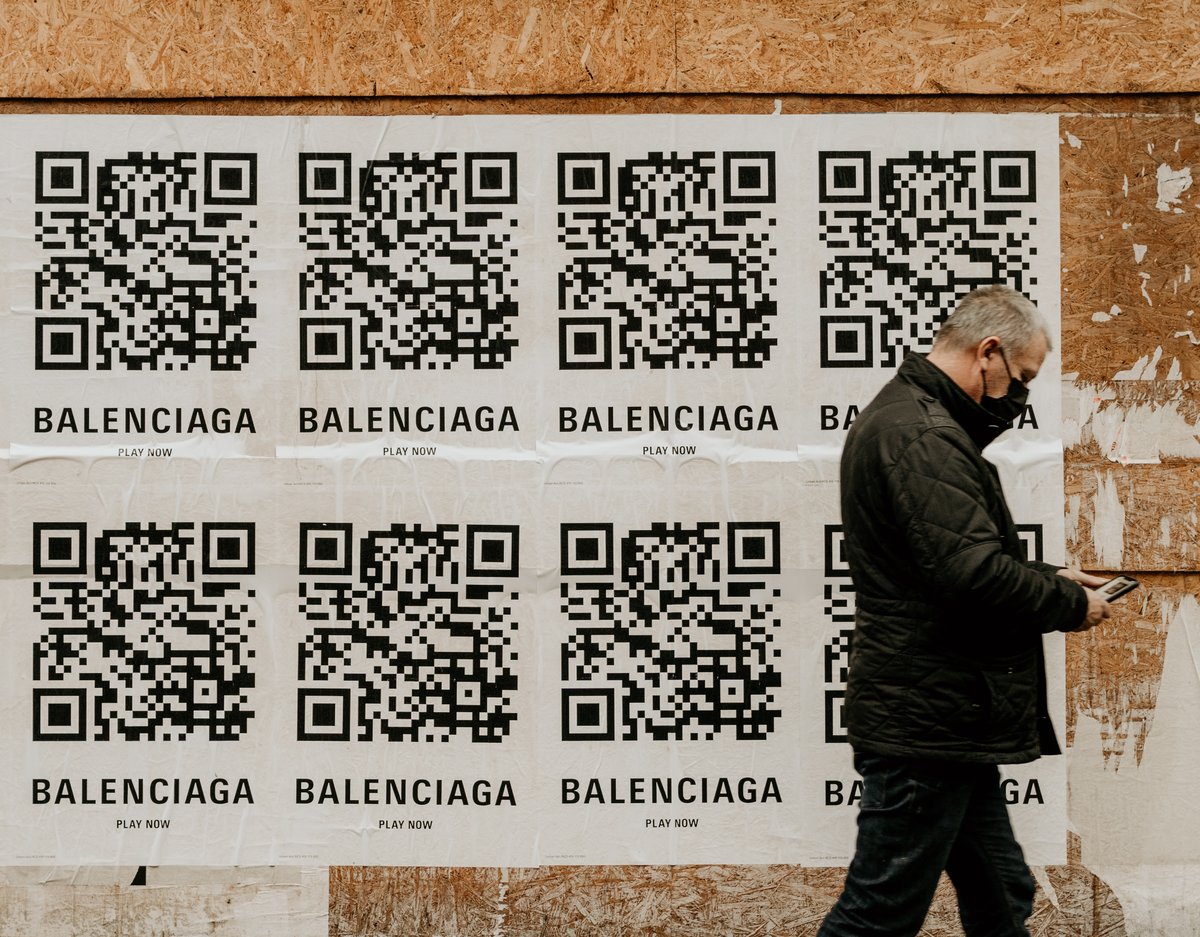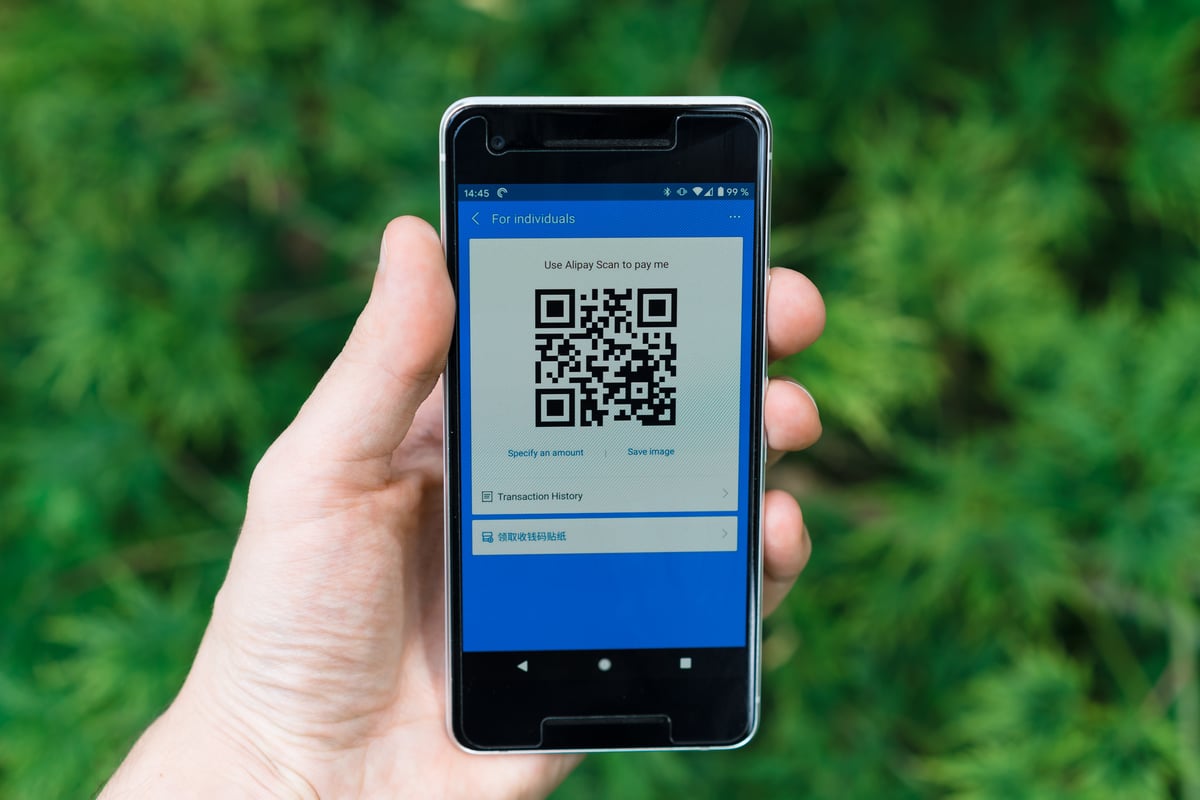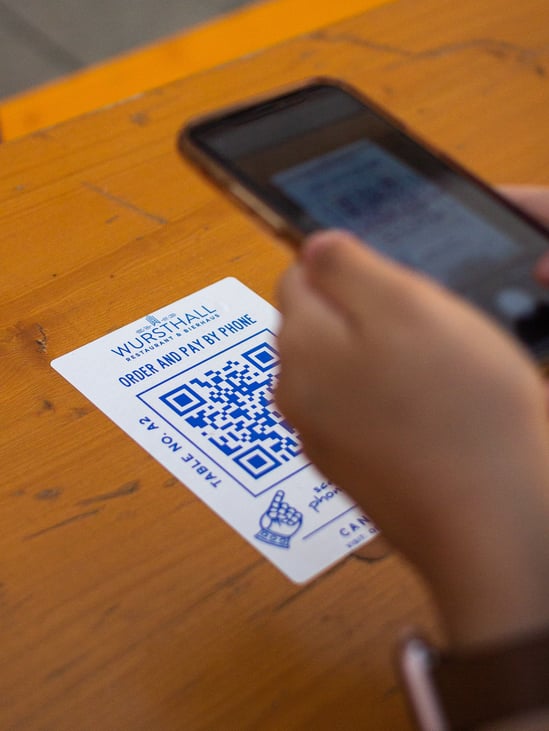
Image source: Unsplash
QR codes have become ubiquitous over the last few years. At first, these strange square barcodes were a rare sight but now they can be found on almost everything from product packaging to tables at restaurants, where the menu can be pulled up in a matter of seconds.
The popularity of QR codes is mainly due to their ease of use, coupled with the fact that they are able to store large amounts of data. Although we can all agree that the popularity of QR codes is only increasing, the question remains: what exactly are they and why should you implement them in your next cross-channel marketing campaign?
In this article, we will define what they are, how they work and what role they can play in your next marketing strategy.
QR Codes: Everything you Need to Know
What Is a QR Code?
QR codes are a type of barcode that stores information as a series of pixels in a square-shaped grid. Despite their simple appearance, QR codes are actually capable of storing a lot of data. But, despite their large data-storing capabilities, they are designed to allow the user to access information instantly.
The ‘QR’ in QR code stands for ‘quick response’ which makes perfect sense considering that you get directed to a brand’s website or social media platform almost immediately after scanning the code.
The first QR code was invented in 1994 in Japan by a subsidiary of the Toyota company called Denso Wave. The company needed a way to accurately track vehicles and parts during the manufacturing process.
The engineer who designed them, Hara Masahiro, says that the company used to use barcodes to keep track of parts but that the system was inefficient because there were sometimes multiple barcodes on the same box and employees had to scan each barcode, which slowed down the whole process significantly.
To solve the problem, he designed a code that could store a large amount of information to be conveyed in a single scan, hence the QR code was born.
How Does a QR Code Work?
QR codes are often used to track information about products in a supply chain. Because most smartphones have built-in QR code readers on their cameras, QR codes are also frequently used in marketing and advertising campaigns.

Image source: Unsplash
A QR code is a two-dimensional pattern of square black and white pixels. A barcode can only be read in one direction – top to bottom – but because of the pattern of a QR code, it can be read in two directions – top to bottom and left to right, allowing it to store 200 times more information than a standard barcode.
QR codes can contain basic information like links to websites or large volumes of data consisting of up to 4 000 characters of text. QR codes can be used to:
- Link directly to the Apple App Store or Google Play store to download an app
- Authenticate online accounts and verify log in details
- Access WiFi by storing encrypted details
- Send and receive payment information
- Link directly to websites or social media platforms
How Do You Create a QR Code?
Denso Wave made their QR code publicly available and didn’t exercise their patent rights, which means that anyone can make and use QR codes.
If you want to create your own QR code, all you need to do is head to a QR code generator site, then:
- Choose what you want your QR code to link to. This can be a PDF, image, WiFi connection, website, Zoom link or even a Bitcoin wallet address. The possibilities are endless!
- Enter the link that you want your QR code to link out to
- As an optional extra, you can choose a different kind of QR code that features various colours and shapes, like the ones below.
Image source: createqrcode.com
Can you Customise a QR Code?
Yes, you can. Some QR code generators have the option to customise the colours, patterns, and background of the QR code. You can even add a logo or CTA frame around the QR code.
How do you Scan a QR Code?
As mentioned above, most smartphones and tablets have cameras with built-in QR code scanners. However, older devices may require a separate app to be downloaded in order to read QR codes.

Image source: Unsplash
Whether you’re using your smartphone camera or a QR reader app, the process is pretty straightforward.
- Open the camera on your smartphone or the QR reader application.
- Point your phone at the QR code so that you can see the code on your device’s screen. You should be able to point the device at any angle and still receive the information from the QR code.
- The data contained in the QR code should instantly be shown on the screen. Alternatively, a banner may pop up onto the screen with a link to a website, which you can then click on to take you to the site.
How Long is a QR Code Valid for?
Qr codes do not have an expiry date. As long as the link that the QR code is embedded with is still active, the QR code will continue to work.
The Role of QR Codes in Cross-channel Marketing
What is Cross-channel Marketing?
Cross-channel marketing refers to the ability of a brand to connect with its customers via a variety of different ways, including via its website, email, social media, SMS, mobile apps, in-store, direct mail and more. With cross-channel marketing, the focus is on the customer and what their preferred method of communication is throughout the customer journey. Cross-channel marketing seeks to solve the issue of inconsistent brand messaging on different channels by focusing on consistency and integration.
How Can you Incorporate QR Codes in your Cross-channel Campaign?
QR codes can be incorporated into a range of marketing materials such as billboards, school yearbooks, brochures, magazines, web pages, product packaging and in-store signage. By scanning a QR code and being directed to the brand’s webpage or social media platform, customers are provided with more information about the product or service instantly.

Image source: Unsplash
Here are some ways that QR codes can be incorporated into cross-channel marketing campaigns:
- A QR can link to a company’s website, social media page, or a dedicated campaign microsite. This removes the hassle of customers having to navigate to a business’s website and having to find the appropriate page. When you use a unique URL matched with your QR code you can accurately measure how much traffic is coming through the QR code.
- QR codes printed in brochures or magazines can be linked to videos that can further enhance the reader experience by providing a more in-depth look into the product.
- QR codes could also be utilised at events like at a Chairperson’s meeting, where the QR code links out to an annual report, for example, or even at a school performance, where the QR code is linked out to the play programme.
- As mentioned above, companies can use QR codes to link to their app page on Apple App Store or the Google Play store.
- With a QR code, businesses can also directly link to a messaging app such as Whatsapp where users can instantly send the company a support query. This can also be done with email and other contact details such as a business number to automatically call the company.
- Location can also be built into QR codes so that customers can easily find and navigate to their closest branch.
- QR codes can be used to activate discount codes and then ink to a store’s eCommerce site where the voucher can be redeemed.
What are the Benefits of Using QR Codes in Cross-channel Campaigns?
Using QR codes in your marketing campaigns can have numerous benefits, including:
- Increased customer engagement, easier access to information and increased conversions because scanning a QR code removes the steps that would usually precede navigating to a website, which is important because it removes effort-based barriers that inhibit users from interacting with your brand.
- They are environmentally friendly. When brands provide customers with one QR code to scan, rather than a flyer with a coupon code, they are cutting down the usage of paper. This is one reason why a lot of restaurants are opting for the use of QR codes over menus, as stated above.
- You can measure their effectiveness. Engagement and conversions based on leads and clicks can be measured through QR codes. When you are able to collect data, you can use it to create even better campaigns in future.
Managing cross-channel marketing campaigns that include QR codes
How do you Manage a QR Code Campaign?
QR codes can be used to effectively increase brand awareness and improve feedback collection if done right. After creating a QR code and distributing it, it’s important to track the data you get from it. In order to do this, consider implementing a UTM code on the URL that your QR code is linked to. After gathering the data, make sure to ask yourself questions, such as the ones below, to measure the performance of your campaign:
- How much traffic is the code generating? If the number is low, consider what might be preventing people from scanning the code. Is the CTA enticing enough?
- Are people redeeming their offer when they reach the landing page or are they just dropping off?
Knowing the answers will help you to adjust your campaign accordingly.
Key Takeaways
If you’re not already using QR codes in your marketing campaigns, we hope that this article has convinced you to do so. QR codes are a simple way of encouraging customers to explore your brand on different platforms, both online and offline and they are extremely easy to create and incorporate into pre-existing campaigns.
The intersection of print in digital marketing strategies is having huge impacts on businesses all over the world. Click the button below 👇to find out more.


